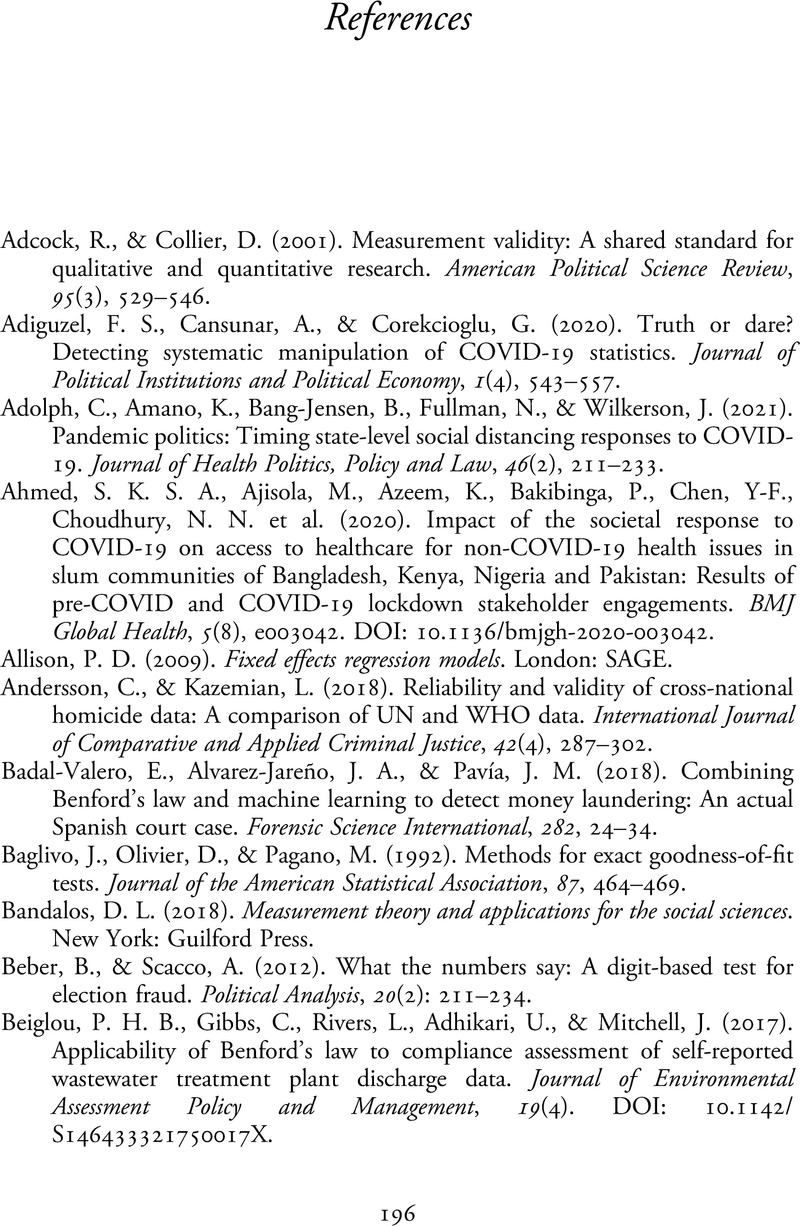Book contents
- Applying Benford’s Law for Assessing the Validity of Social Science Data
- Applying Benford’s Law for Assessing the Validity of Social Science Data
- Copyright page
- Contents
- Figures
- Tables
- Preface
- Acknowledgments
- Chapter 1 Introduction
- Chapter 2 Validity and Self-Reported Data
- Chapter 3 Benford’s Law and Assessing Conformity
- Chapter 4 Data Characteristics and the Workflow of Benford Agreement Analysis
- Chapter 5 Benford Agreement Analysis of the Sea Around Us Project’s Fish-Landings Data
- Chapter 6 Benford Agreement Analysis of US and Global COVID-19 New Cases Data
- Chapter 7 Assessing the Impacts of Problematic Benford Validity
- Chapter 8 Conclusion
- References
- Index
- References
References
Published online by Cambridge University Press: 09 November 2023
- Applying Benford’s Law for Assessing the Validity of Social Science Data
- Applying Benford’s Law for Assessing the Validity of Social Science Data
- Copyright page
- Contents
- Figures
- Tables
- Preface
- Acknowledgments
- Chapter 1 Introduction
- Chapter 2 Validity and Self-Reported Data
- Chapter 3 Benford’s Law and Assessing Conformity
- Chapter 4 Data Characteristics and the Workflow of Benford Agreement Analysis
- Chapter 5 Benford Agreement Analysis of the Sea Around Us Project’s Fish-Landings Data
- Chapter 6 Benford Agreement Analysis of US and Global COVID-19 New Cases Data
- Chapter 7 Assessing the Impacts of Problematic Benford Validity
- Chapter 8 Conclusion
- References
- Index
- References
Summary

- Type
- Chapter
- Information
- Publisher: Cambridge University PressPrint publication year: 2023

